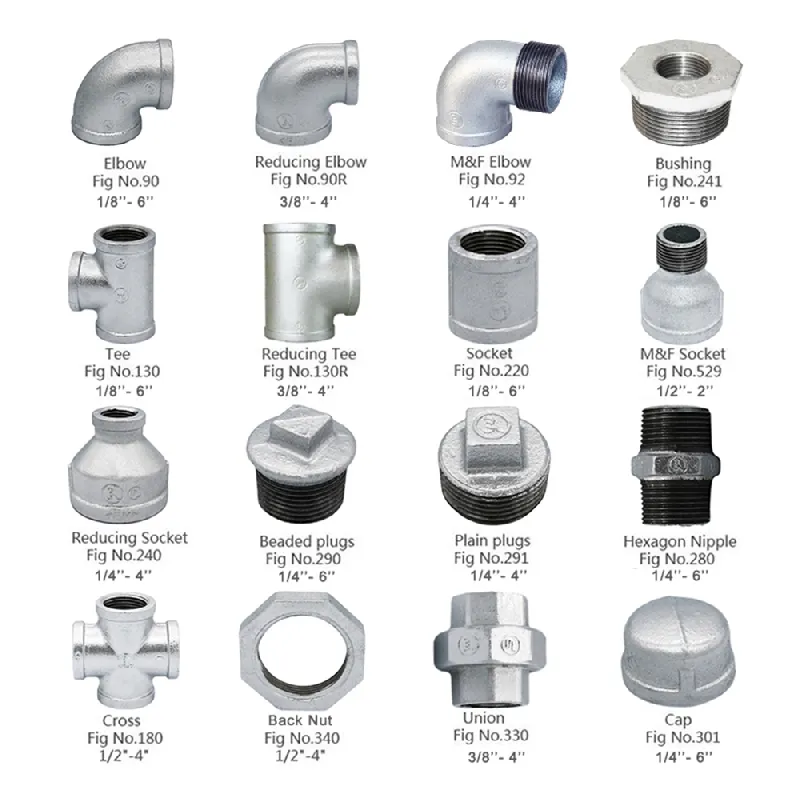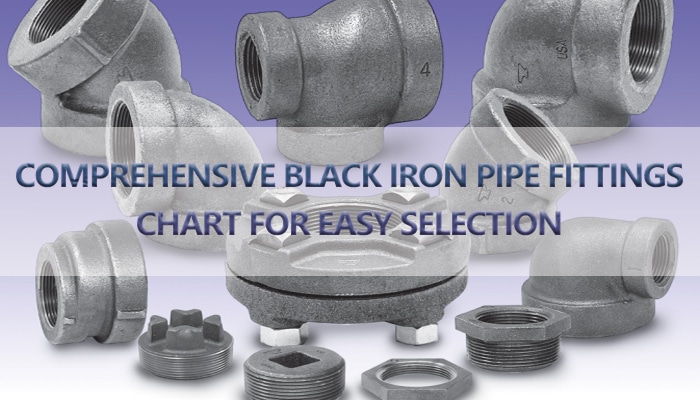Different Types of Pipe Couplings in Plumbing System and How to Choose
Basic Types of Pipe Fittings
If you need to change the direction of flow, threaded or socket weld pipe elbows are typically used. The most popular are: 90-degree and 45-degree elbows. Elbows are key fittings used in plumbing. Street elbows have both male and female threaded ends and are also available in 22-1/2 degree elbows.
With female National Pipe Taper (NPT) threads, they are used to close the end of a male pipe. The cap fits over the end of the male pipe to stop the flow.
Fitting reducers gradually change the diameter between one pipe and another. These fittings are used to connect two different sized pipes or different sized pipes and fittings. Unlike reducing joints, fitting reducers smoothly reduce the flow rate between a large pipe and a small pipe.
Flanges are used to connect pipes. Pipes are threaded or welded to flanges and then bolted together to seal. Flange connections are widely used in industrial applications that handle high pressures.
Pipe fittings are used to extend pipes or change pipe sizes. After reduction, this is called a bell reducer. Available with internal threads or socket welds.
Pipe tees are in the shape of a T and have two outlets – at 90° angles to the main line connection. It is a short section of pipe with a side outlet. Pipe tees are used to connect pipes to pipes that are at right angles to the line.
Confused about which pipe couplings to choose? Contact us and our experts will provide you with a solution.

How to Choose the Right Pipe Couplings
When choosing fittings for your application, you must focus on three details of the pipe: its material, size, and fitting standards.
Material
The material of the fitting must be compatible with the material of the pipe. Generally speaking, the same material should be used for the fitting and the pipe it connects. pipe connection types ensures that both components are well suited for their purpose and that pipes of different materials can be seamlessly integrated as long as the materials are compatible with the purpose.
We provide you with galvanized pipe fittings and black pipe fittings, which have good corrosion resistance, high temperature and high pressure resistance, and are widely used in water pipelines and gas systems.
Size
The size of the fitting is obviously an important factor in choosing the right fitting for your system. Without precise dimensions, there will be no seal and the system will not function properly.
Learn more: How to Determine Pipe Thread Type and Size
Fitting Standards
Fitting standards are determined by governing bodies to determine how pipes and fittings can be connected together. We offer you pipe fittings in NPT, BSPT standards. If you are unsure of the key standard used.
Our various black iron pipe fittings chart provides a detailed overview, including dimensions, types, and applications. Whether you are working on plumbing, gas, or industrial projects, this chart will serve as a valuable resource to ensure accurate fitting selection, saving you time and effort.
Understanding Black Iron Pipe Fittings
Black iron pipe fittings are essential components in plumbing and industrial applications. These fittings are renowned for their durability, strength, and resistance to corrosion.
By referring to our black iron pipe fittings chart, you can easily identify the different types of fittings available, such as Black Bracket Elbow, tees, couplings, and caps. Each fitting is designed for specific purposes, ensuring a secure and leak-free connection.

Exploring the Dimensions and Sizes
The black iron pipe sizes provides detailed information about dimensions and sizes, allowing you to select the right fitting for your project.
It includes measurements such as diameter, length, and thread size. Whether you’re working with standard or metric measurements, our chart simplifies the process of finding the perfect fit.
Applications and Common Uses
To make the chart even more informative, we have included a section on applications and common uses. From plumbing systems to gas pipelines and industrial installations.
Black iron pipe fittings find extensive use in various industries. The chart highlights the recommended applications for each fitting, ensuring you choose the appropriate fitting for your specific needs.

Examples of Black Iron Pipe Fittings in Action
To illustrate the versatility of black iron pipe fittings, let’s consider a few examples. In a residential plumbing project, a black iron tee fitting can be used to connect multiple water supply lines efficiently.
For a gas installation, a black iron elbow fitting helps to change the direction of the pipeline without compromising safety. Industrial projects often require black iron couplings to join pipes securely. The chart provides visual examples of these fittings in action, making it easier to understand their practical applications.
Comments
Post a Comment